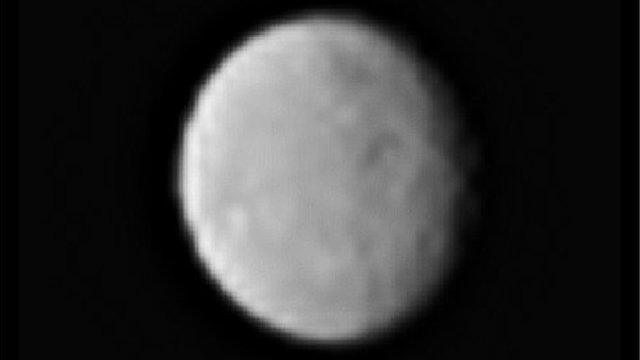Ceres: Possible plume hints at active world
- Published
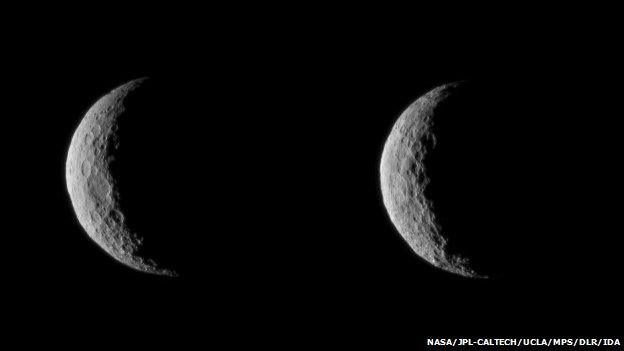
Some of the competing theories about Ceres will shortly go in the bin
Timing really is everything. At the Lunar and Planetary Science Conference, external in Texas, scientists piled in to a room to hear presentations about the dwarf planet Ceres.
Nasa's Dawn spacecraft had been in orbit around Ceres for a couple of weeks - far too early to make clear-cut pronouncements.
Thus, the humorous title of the session was: "Your last chance to talk about Ceres before Dawn data wreck your theories".
But Dawn, which has been travelling to Ceres after investigating another object in the asteroid belt, has been taking pictures and measurements of the world during its approach.
And the preliminary findings are certainly intriguing, if still open to debate.
Much speculation has surrounded two bright spots inside an impact crater on Ceres, which scientists now think are water-ice.
"It seems Ceres is an icy body," mission scientist Andreas Nathues told the conference.
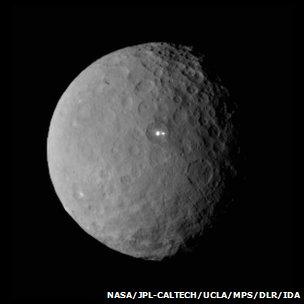
Feature 5: Bright spots in an 80km-wide crater have been the talk of the encounter so far
But there's something even more interesting that team members have noticed about the brightest of the spots, known for the time being simply as Feature 5.
"The question is whether Ceres has an active surface or not," said Dr Nathues, the camera team leader from the Max Planck Institute for Solar System Research, external.
"Interestingly, this feature is located in a crater of 80km diameter... you can see that feature when the rim is very likely in front of the line of sight."
The implication is that Dawn might have seen a plume of water vapour emanating from Feature 5.
But Dr Nathues added: "We need high-resolution data to confirm this."
The feature evolves and brightens during the day, but dims towards dusk, eventually disappearing completely.
Furthermore, colour spectral measurements of Feature 5 are consistent with an icy surface. And an increase in brightness during the daytime under one of the instrument's filters is suggestive of some emission from the spot.
"There are two regions that are likely active [on Ceres]," said Dr Nathues, stressing that more work was needed to confirm the theories.
Ceres is the biggest object in the asteroid belt, so massive in fact, that it is the only one to have been sculpted into a spherical form like the main planets.
There were plenty of presentations putting forward theories of Ceres' internal structure and geochemistry.

Dawn has mapped Ceres at low resolution. The bright Feature 5 jumps out of this mosaic
One talk suggested Ceres might have a warm, convecting core with a muddy ocean beneath its cratered surface.
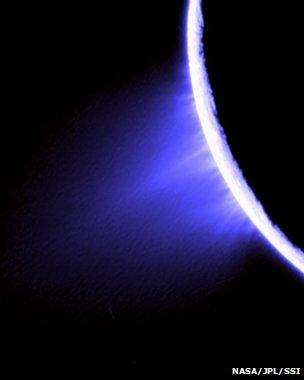
Should we think of Ceres as being more like Enceladus?
But, as the session title sums up succinctly, the kind of close-up study that Dawn will provide has a habit of consigning some predictions to the dustbin.
That's also what generates the excitement that exists around this mission and its current home.
In his talk, the Dawn mission's chief scientist likened Ceres to the two icy saturnian moons - Dione and Enceladus.
The latter world, of course, has become one of the most interesting future targets for exploration due to the large geysers that spew water vapour from an ocean beneath its icy shell.
The recent discovery of possible hydrothermal activity within Enceladus means that it may have the key set of ingredients for life.
The observation that Ceres may too emit water vapour into space raises intriguing questions about habitability in the Solar System.
"In [International Astronomical Union] categorisation, Ceres is a dwarf planet like cold Pluto. But when I see things in a particular set, I usually think of them as having some properties in common," Prof Christopher Russell explained. "I don't really consider that Ceres and Pluto are going to be alike."
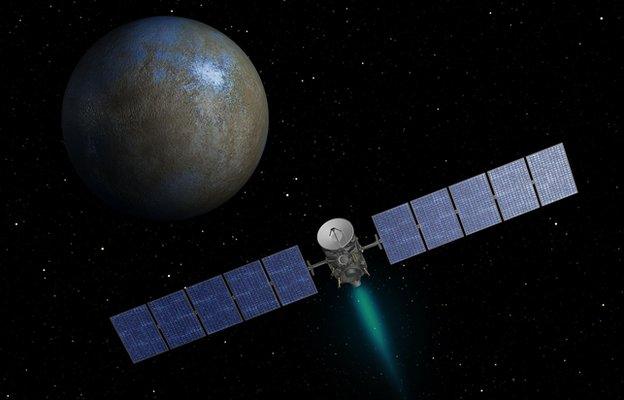
Dawn gets down to serious mapping of Ceres in April
- Published6 March 2015
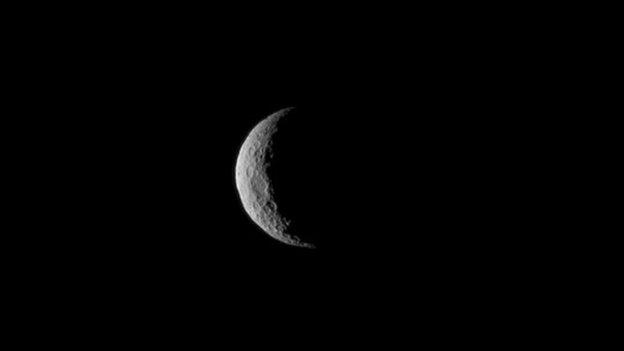
- Published2 March 2015

- Published27 January 2015
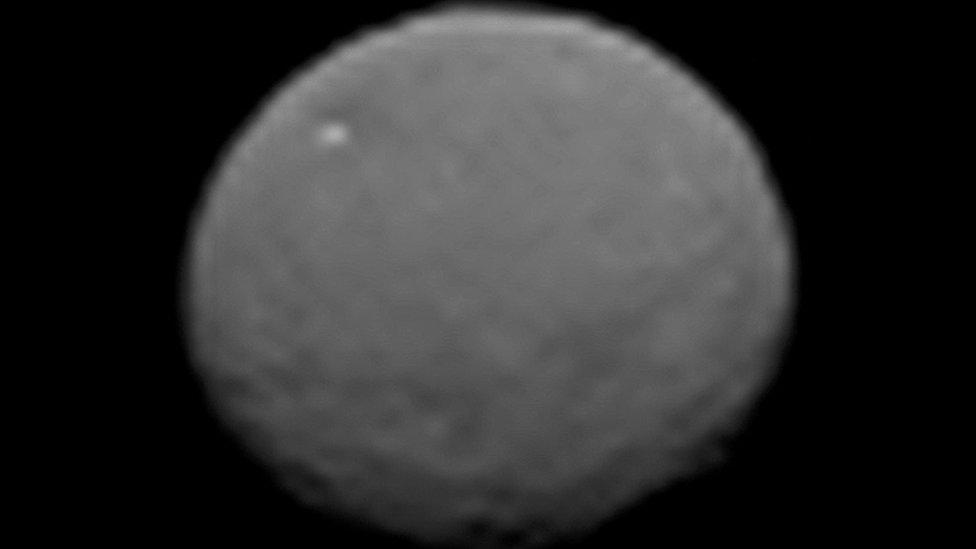
- Published19 January 2015
